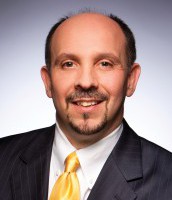For Americans to thrive individually and for the United States to compete in today’s global economy, our citizens must be committed to learning—rigorous, relevant, college-level learning. More than a year ago, I made this point in a speech entitled “It’s the Learning, Stupid.” The somewhat provocative title, though clearly adapted from another source (political consultant James Carville), captures an idea that is becoming central to us at Lumina Foundation—because it is vital to the future of this nation.
The modern workplace demands increasingly higher levels of skill and knowledge, levels that simply cannot be attained without education beyond high school. In fact, labor economists project that more than 60 percent of all American jobs will require postsecondary education by 2018. Clearly, this presents a huge challenge, as Census figures show that, in 2008, less than 38 percent of working-age Americans (25-64 years old) held at least a two-year degree.
Lumina has embraced this challenge by committing to achieve the Big Goal, what we also call Goal 2025: By the year 2025, we want 60 percent of Americans to hold high-quality postsecondary degrees or credentials.

Yes, 60 percent is a big number. But Goal 2025 isn’t just a numbers game. It won’t be enough to increase the proportion of degree-holding Americans to 60 percent; we must also find ways to ensure the quality of those degrees.
And that means we must confront some important questions: What exactly are our students learning—and what should they be learning? What knowledge, skills and other competencies must they have so they can thrive? How can we better measure the “value-added” capabilities of a college or university? How can we make sure that credits, degrees, and credentials actually represent what students know and are able to do?
This issue of Lumina Foundation Focus tackles those questions head-on, showing what is happening at several institutions that are working to make student learning Job 1. For example, in this issue, you’ll read about:
- The University of Wisconsin-Madison, where officials have made great strides in clearly defining the learning outcomes they expect their students to achieve.
- Millsaps College in Jackson, Miss., where an emphasis on writing proficiency drives the effort to improve all types of learning.
- Alverno College in Milwaukee and Salt Lake City-based Western Governors University (WGU), two institutions where competency-based learning is key.
- LaGuardia Community College in New York City, where electronic portfolios provide a rich vein of material for assessing students’ work.
We think the examples presented here are inspiring and instructive.
What’s more, Lumina’s emphasis on ensuring quality in postsecondary education is underscored by the Foundation’s recent release of its Degree Profile—a baseline set of reference points for what students at any institution should know and be able to do to earn associate, bachelor’s and master’s degrees—regardless of their field of specialization.
I urge you to explore this issue of Focus, including all of its “extras,” and to review the Degree Profile.
It’s all about learning. And that’s what all of us need to be about.

Jamie P. Merisotis
President and CEO
